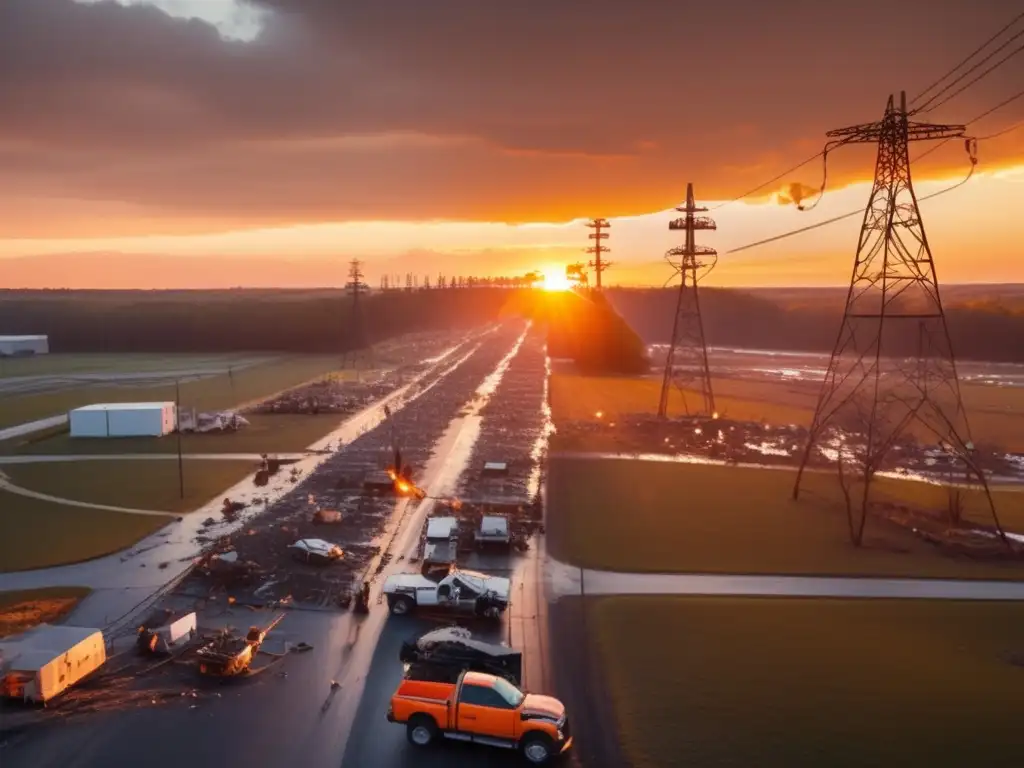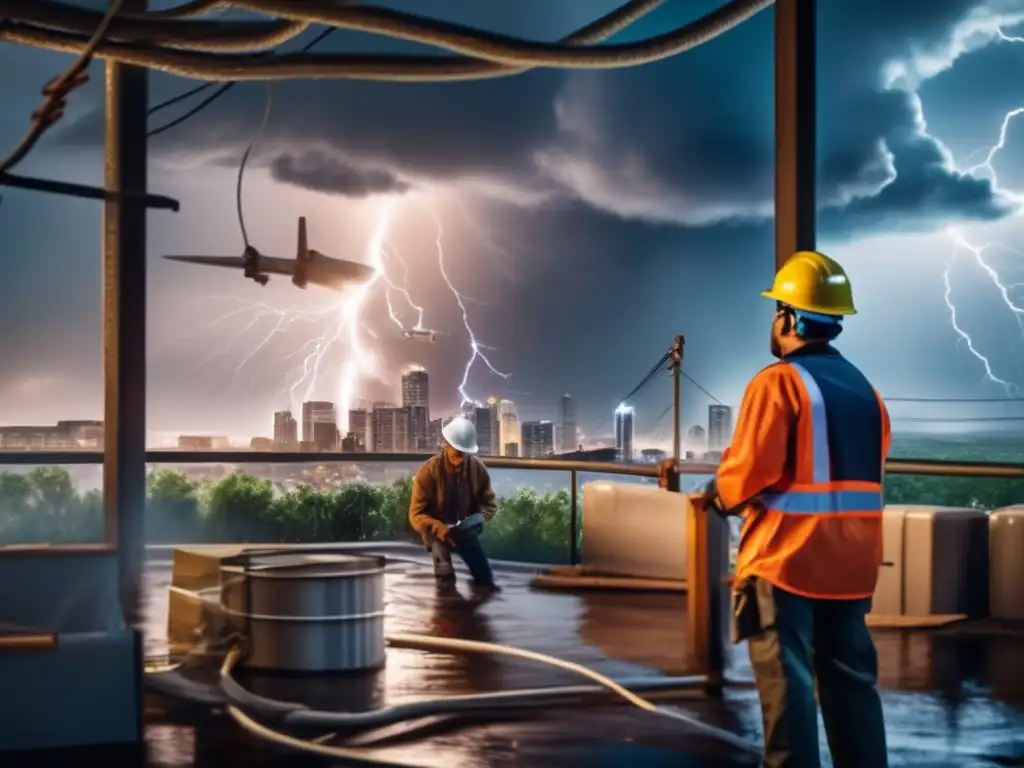Restoring The Power Grid After A Hurricane

Restoring the Power Grid After a Hurricane: Understanding the Challenges and Solutions
Introduction
Hurricanes are among the most destructive natural disasters, causing extensive damage to infrastructure, homes, and power grids. Among the most critical aspects of hurricane recovery is restoring power to affected areas. The power grid plays a vital role in communities, providing electricity for households, hospitals, businesses, and emergency services. However, restoring power to affected areas after a hurricane is a complex process, fraught with challenges. This article will explore the challenges and solutions in restoring the power grid after a hurricane.
The Challenges of Restoring the Power Grid After a Hurricane

The Extent of Damage
Hurricanes can cause massive damage to power lines, transformers, and other electrical equipment. Powerful winds, flying debris, and flooding can break power lines and damage electrical equipment, making the power grid inoperable. Depending on the severity of the hurricane, the damage can be extensive, making it challenging to restore power quickly.
Access to Affected Areas
After a hurricane, roads may be blocked, and bridges may be impassable. Flooding also makes it difficult to access affected areas. This lack of access poses a significant challenge in restoring power to those areas. Utility companies must first clear roads and bridges of debris, then assess the extent of the damage to transmission and distribution lines. This process can take days or even weeks.
Lack of Power Generation Capacity
In some cases, the hurricane may have damaged power-generating facilities, reducing the capacity to generate electricity. It may take several weeks or months to repair these facilities, leading to a severe shortage of power. This shortage prolongs the time taken to restore power to affected areas.
Shortages of Personnel and Resources
Restoring power requires skilled personnel and equipment, including utility workers, linemen, engineers, and technicians. However, after a hurricane, these personnel and resources may be in short supply, overwhelmed by the extent of damage and the number of people affected. This lack of personnel and resources makes it difficult to restore power quickly.
Solutions for Restoring the Power Grid After a Hurricane

Preparation
One of the critical solutions for restoring power after a hurricane is preparation. Utility companies must prepare for the hurricane season by putting in place robust emergency response plans. These plans should include provisions for clearing debris, restoring power to critical infrastructure, and reestablishing communication lines. The plans should also include provisions for deploying additional personnel and resources in affected areas.
Advanced Technologies
Another solution is the use of advanced technologies to improve the power grid's resilience. Technologies such as smart grid systems, microgrids, and renewable energy sources can help improve the power grid's capacity to withstand hurricanes. Smart grid systems can detect faults and isolate affected areas, reducing the extent of power outages. Microgrids can operate independently of the main power grid, providing power to critical infrastructure. Renewable energy sources such as solar and wind can supplement traditional power generation, reducing the reliance on fossil fuels and improving the grid's sustainability.
Collaboration and Partnerships
Collaboration and partnerships among utility companies, government agencies, and other stakeholders can help in restoring power after a hurricane. Utility companies can partner with local governments to coordinate their response efforts, share resources, and prioritize the restoration of power to critical infrastructure such as hospitals and emergency services. Government agencies can also provide support in clearing debris and restoring communication lines.
Investment in Infrastructure
Investment in infrastructure is another crucial solution for restoring power after a hurricane. Utility companies can invest in upgrading their power grids, replacing old equipment with newer, more robust systems. Governments can invest in building resilient infrastructure, such as underground power lines, to protect the power grid from hurricane damage.
Frequently Asked Questions

-
How long does it take to restore power after a hurricane?
The time taken to restore power after a hurricane varies depending on the extent of damage and the number of people affected. It can take anywhere from a few days to several weeks or even months.
-
What can individuals do to prepare for power outages during hurricanes?
Individuals can prepare for power outages by having backup power sources such as generators and batteries. They should also stock up on food, water, and other essential supplies that do not require refrigeration.
-
What are microgrids, and how do they work?
Microgrids are small-scale power systems that can operate independently of the main power grid. They consist of a combination of power generation sources, such as solar panels and batteries, and can provide power to critical infrastructure during power outages.
-
Are there any governmental regulations in place to improve the power grid's resilience against hurricanes?
Yes, governmental regulations such as the Federal Energy Regulatory Commission (FERC) and the North American Electric Reliability Corporation (NERC) have put in place standards and guidelines to improve the power grid's resilience against hurricanes.
-
What is the long-term solution for reducing the impact of hurricanes on the power grid?
The long-term solution for reducing the impact of hurricanes on the power grid is to invest in renewable energy sources such as solar and wind. These sources are less susceptible to hurricane damage and can provide a more sustainable and resilient power supply.
Conclusion
In conclusion, restoring power after a hurricane is a challenging and complex process that requires preparation, advanced technologies, collaboration and partnerships, and investment in infrastructure. By putting in place robust emergency response plans, deploying advanced technologies, collaborating with stakeholders, and investing in infrastructure, it is possible to restore power quickly to affected areas. The importance of restoring power after a hurricane cannot be overstated, as it plays a vital role in communities' recovery and resilience.
Additional Resources

- 5 Ways to Improve Resilience of the Electric Grid Against Natural Disasters
- Power Grid Resilience After Natural Disasters
- 2018 National Infrastructure Protection Plan
 Local Business Support: Shopping Locally After A Hurricane
Local Business Support: Shopping Locally After A Hurricane Environmental Cleanup: Addressing Pollution Post-Hurricane
Environmental Cleanup: Addressing Pollution Post-Hurricane Wildlife Rehabilitation After A Hurricane
Wildlife Rehabilitation After A HurricaneIf you want to discover more articles similar to Restoring The Power Grid After A Hurricane, you can visit the Hurricane recovery: category.
Leave a Reply

Articulos relacionados: